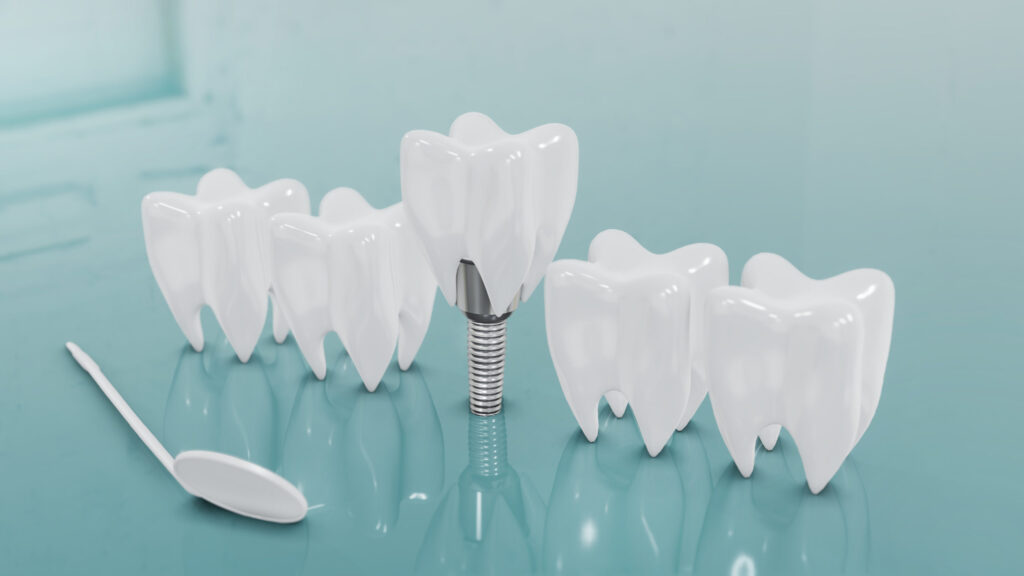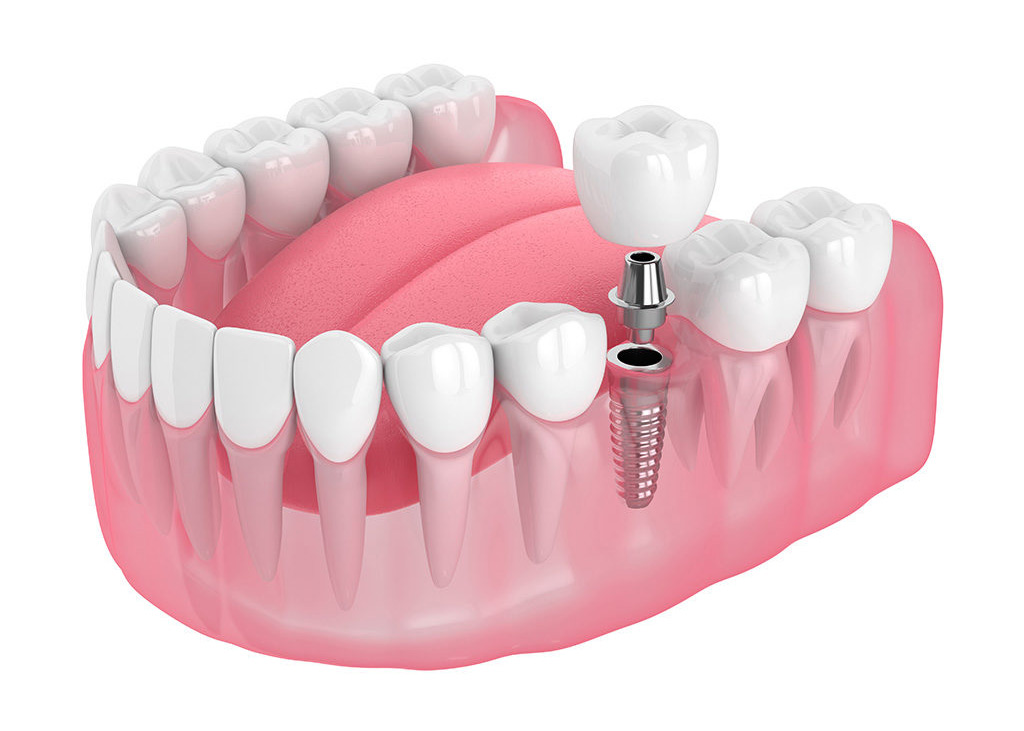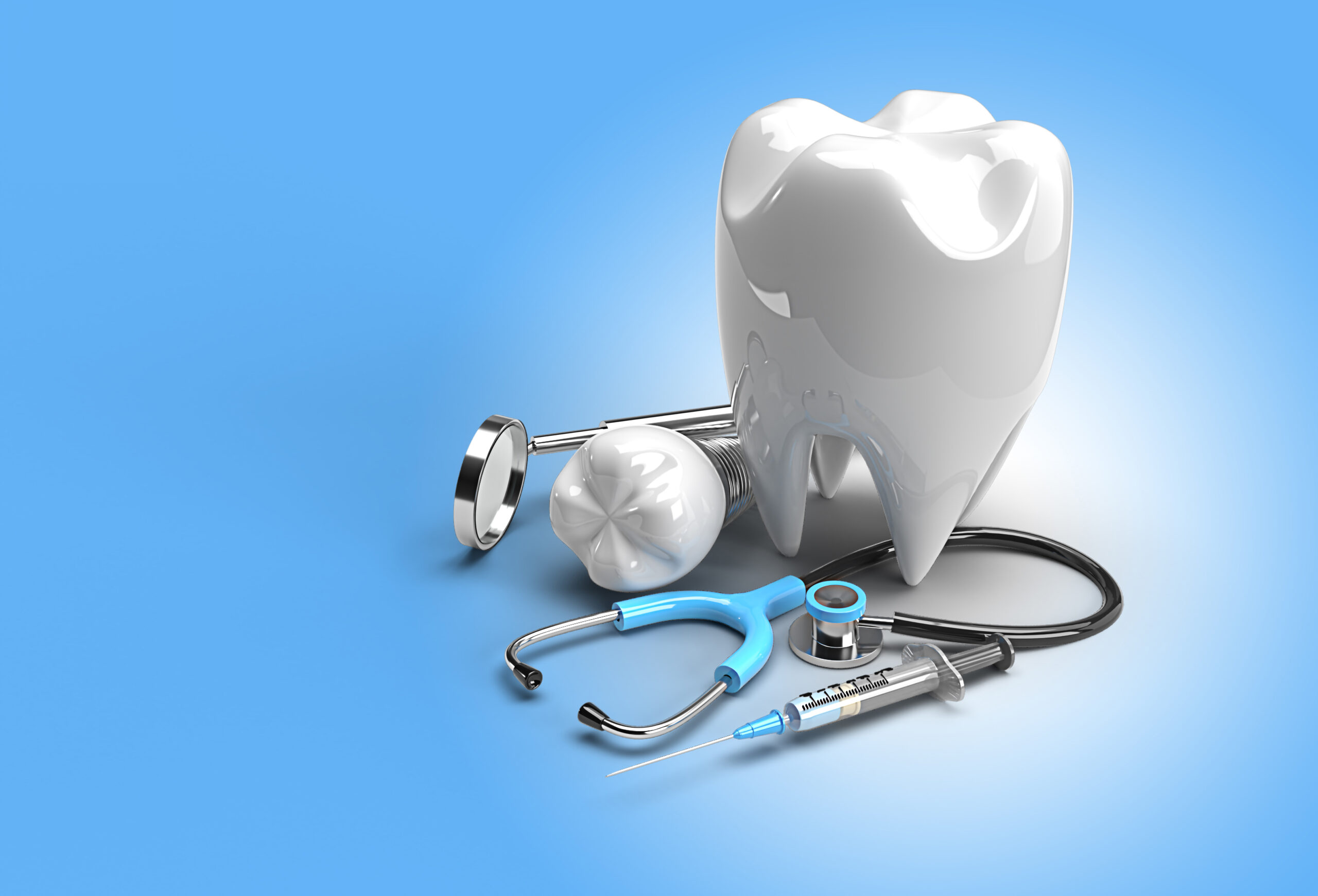Dental implants are artificial tooth roots that are placed into the jawbone to support replacement teeth. The implants are typically made of titanium, which is a biocompatible material that fuses with the bone over time to provide a strong, stable foundation for replacement teeth. Once the implants are in place, replacement teeth, such as crowns or bridges, can be attached to them.
Choosing the right type of dental implant is essential for ensuring the best results. The right implant will depend on several factors, including the number of missing teeth, the location of the missing teeth, and the condition of the jawbone. Additionally, some types of dental implants may be more suitable for certain patients than others, depending on their individual needs.
The purpose of this blog is to discuss the different types of dental implants and help readers determine which one is right for them. By understanding the advantages and disadvantages of each type of implant, readers will be able to make an informed decision about which option is best suited to their individual needs.
Endosteal Implants
A. Definition and explanation of endosteal implants
Endosteal implants are the most commonly used type of dental implant, and they are designed to be surgically inserted directly into the patient’s jawbone. These implants typically consist of small, screw-like devices made from titanium or other biocompatible materials. Once they are inserted into the jawbone, the implants will bond with the bone tissue over time through a process called osseointegration.
B. Advantages and disadvantages of endosteal implants
The primary advantages of endosteal implants are their strength and durability. Because these implants are anchored directly into the jawbone, they provide a sturdy foundation for artificial teeth that can withstand the forces of biting and chewing. They are also versatile, and can be used to support a single tooth or multiple teeth, depending on the patient’s needs.
One potential disadvantage of endosteal implants is that they require a certain level of jawbone density to be successful. Patients who have experienced significant bone loss due to periodontal disease or other factors may need to undergo a bone grafting procedure prior to implant placement. Additionally, the implant placement process can be more involved and time-consuming than other types of dental implant procedures, which may not be suitable for all patients.
C. Who is a good candidate for endosteal implants
Endosteal implants are generally considered to be a good option for patients who have lost one or more teeth and are in good overall health. Candidates for endosteal implants should have sufficient jawbone density to support the implants and should be committed to maintaining good oral hygiene habits after the procedure. Patients who smoke or have certain medical conditions that affect the healing process may not be good candidates for endosteal implants.
In conclusion, endosteal implants are a widely used and effective option for patients who are missing teeth. While they may not be suitable for all patients, those who are good candidates for endosteal implants can enjoy long-lasting and natural-looking tooth replacements that can improve their overall quality of life. Patients who are interested in learning more about endosteal implants should consult with a dental implant specialist to determine if this option is right for them.
Subperiosteal Implants
A. Definition and explanation of subperiosteal implants
Subperiosteal implants are a type of dental implant that is placed on top of the patient’s jawbone, rather than being inserted directly into the bone like endosteal implants. These implants consist of a metal framework that is custom-made to fit the patient’s jaw, with small metal posts that protrude through the gum tissue. The artificial teeth are then attached to these posts.
B. Advantages and disadvantages of subperiosteal implants
One of the primary advantages of subperiosteal implants is that they can be a good option for patients who have experienced significant bone loss and do not have enough jawbone density to support endosteal implants. Subperiosteal implants are also less invasive than endosteal implants, and the placement procedure typically takes less time.
However, there are also some potential disadvantages to consider. Subperiosteal implants may not be as strong or durable as endosteal implants, and they may not be suitable for patients who have certain medical conditions or habits that could interfere with the healing process. Additionally, subperiosteal implants may require more maintenance than other types of dental implants, as the framework can collect bacteria and debris over time.
C. Who is a good candidate for subperiosteal implants
Subperiosteal implants may be a good option for patients who have lost one or more teeth and have experienced significant bone loss as a result of gum disease, trauma, or other factors. Candidates for subperiosteal implants should have enough jawbone density to support the metal framework, and should be committed to maintaining good oral hygiene habits to prevent infections or other complications. Patients who smoke or have certain medical conditions may not be good candidates for subperiosteal implants.
In conclusion, subperiosteal implants can be a good option for patients who have lost teeth and have insufficient jawbone density to support endosteal implants. While they may not be as strong or durable as other types of dental implants, subperiosteal implants can provide a stable foundation for artificial teeth and help patients restore their ability to eat and speak with confidence. Patients who are interested in subperiosteal implants should consult with a dental implant specialist to determine if this option is right for them.
Zygomatic Implants
Zygomatic implants are a type of dental implant that are used when traditional implant options are not feasible due to inadequate jawbone density or volume. This type of implant uses the zygomatic bone, which is a dense bone in the cheek area, as the anchor for the implant instead of the jawbone.
A. Definition and explanation of zygomatic implants
Zygomatic implants involve the insertion of long implants into the zygomatic bone and the posterior part of the maxilla (upper jawbone). The implant is longer than traditional implants and is anchored in the zygomatic bone, which is denser and stronger than the maxillary bone. This provides a stable foundation for the implant, allowing for the successful placement of dental restorations.
B. Advantages and disadvantages of zygomatic implants
One of the primary advantages of zygomatic implants is that they offer an effective solution for individuals who do not have enough bone density or volume to support traditional dental implants. This type of implant can provide stability and strength to the dental restoration, which can improve oral function and appearance.
However, zygomatic implants can be more complex and invasive than traditional implants, as they require specialized training and equipment to properly place. The procedure can also be more time-consuming and expensive than other types of implants. Additionally, not all patients are good candidates for zygomatic implants, and an individualized treatment plan should be developed based on each patient’s specific needs and circumstances.
C. Who is a good candidate for zygomatic implants
Patients who have experienced significant bone loss in the upper jawbone due to trauma, disease, or other factors may be good candidates for zygomatic implants. Individuals with severe periodontal disease or those who have undergone radiation therapy to the head and neck may also benefit from this type of implant.
However, zygomatic implants may not be suitable for all patients. Patients with certain medical conditions, such as uncontrolled diabetes, may not be good candidates for this procedure. It is important for patients to discuss their options with a dental implant specialist to determine the best course of treatment for their unique situation.
All-on-Four Implants
A. Definition and explanation of All-on-Four implants
All-on-Four implants are a type of dental implant that is designed to replace a full arch of missing teeth. As the name suggests, only four implants are used to support an entire arch of teeth. This is achieved by placing two implants at the front of the arch and two implants at the back of the arch, at an angle. The angulation of the implants allows for better support and stability of the denture.
B. Advantages and disadvantages of All-on-Four implants
Advantages:
- Fewer implants required: All-on-Four implants use fewer implants than traditional implants, which can make them a more cost-effective solution for patients who need to replace a full arch of missing teeth.
- Faster healing time: Because only four implants are used, the healing time is often shorter than with traditional implants, as there are fewer incisions and less trauma to the jawbone.
- Immediate placement of the denture: With All-on-Four implants, the denture can often be placed on the same day as the implants. This means that patients can leave the dental office with a new set of teeth in just one appointment.
- Better stability: The angulation of the implants provides better support and stability for the denture, reducing the risk of slippage or discomfort.
Disadvantages:
- Limited options for implant placement: All-on-Four implants require specific placement of the implants, which may not be possible in all cases. Patients with insufficient bone density may not be good candidates for this type of implant.
- Potential for implant failure: All-on-Four implants rely on only four implants for support, which means that if one implant fails, the entire denture may need to be replaced.
C. Who is a good candidate for All-on-Four implants
All-on-Four implants are a good option for patients who have lost most or all of their teeth in one or both arches. Good candidates for this type of implant include those who have good bone density and sufficient jawbone to support the implants. It is important for patients to have good oral hygiene habits and commit to regular check-ups with their dentist to ensure the longevity of the implant-supported denture. A consultation with a dental implant specialist can help determine if All-on-Four implants are the right solution for a patient’s specific dental needs.
Conclusion
In conclusion, there are different types of dental implants available to suit the unique needs of each patient. Endosteal implants are the most commonly used type, suitable for patients with sufficient jawbone density. Subperiosteal implants may be recommended for patients with a shallow jawbone or those who cannot undergo bone grafting. Zygomatic implants are an alternative for patients with severe bone loss in the upper jaw, while All-on-Four implants offer a full arch replacement solution with fewer implants required.
It is crucial to consult with a dental implant specialist to determine the right type of dental implant for your specific needs. Factors such as jawbone density, oral health, and personal preferences should be taken into account when making a decision. With the right type of dental implant, patients can enjoy improved oral health, functionality, and aesthetics.
Do not hesitate to reach out to a dental implant specialist for more information on the different types of dental implants available and which one may be suitable for you.




